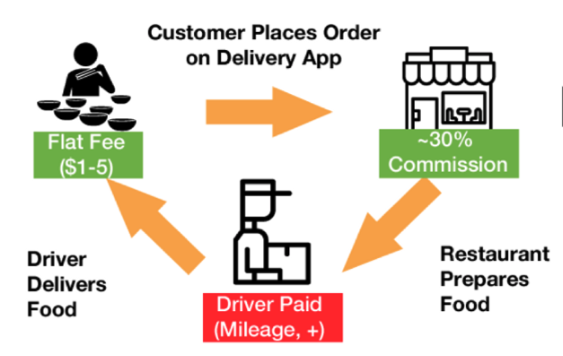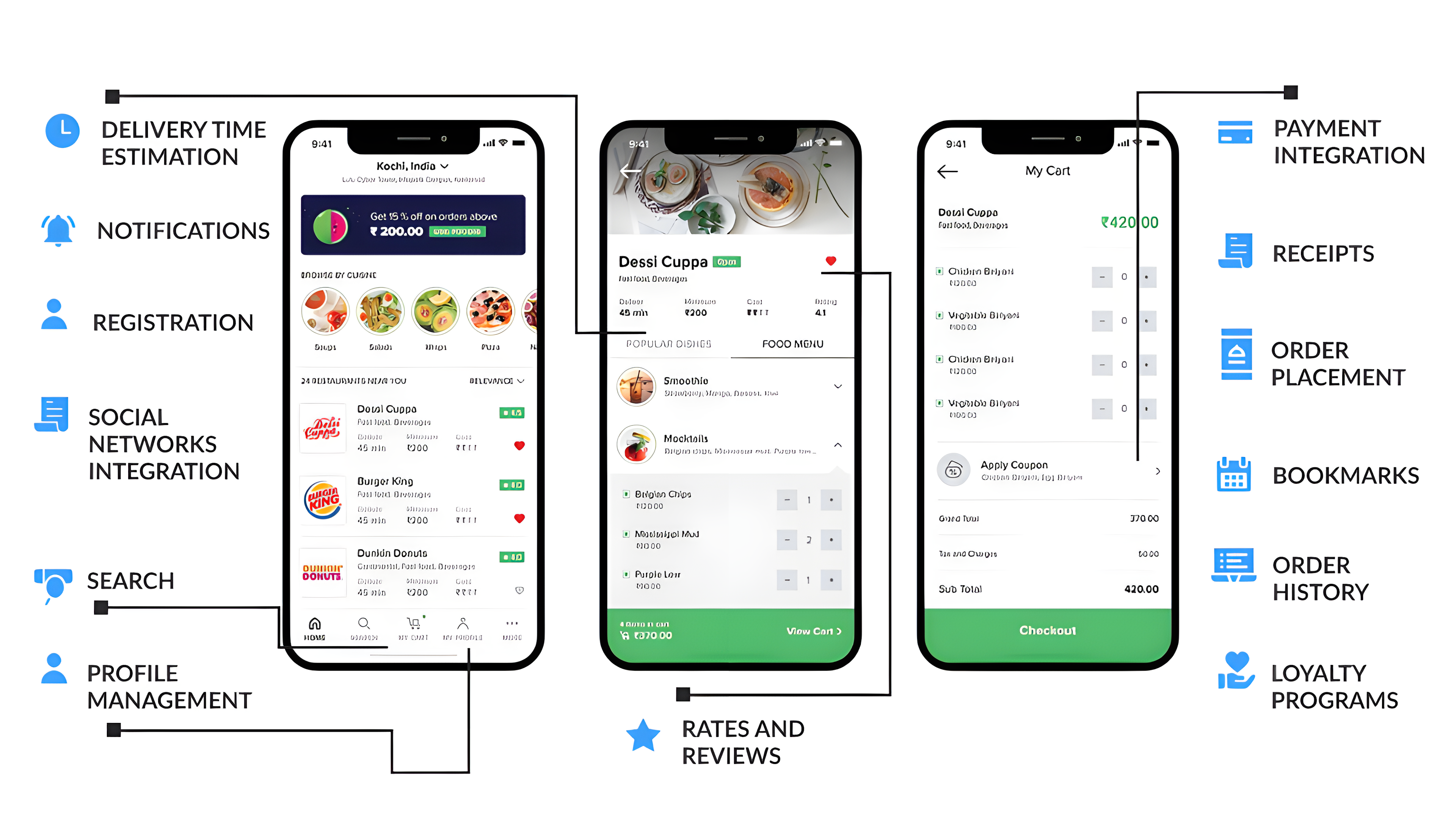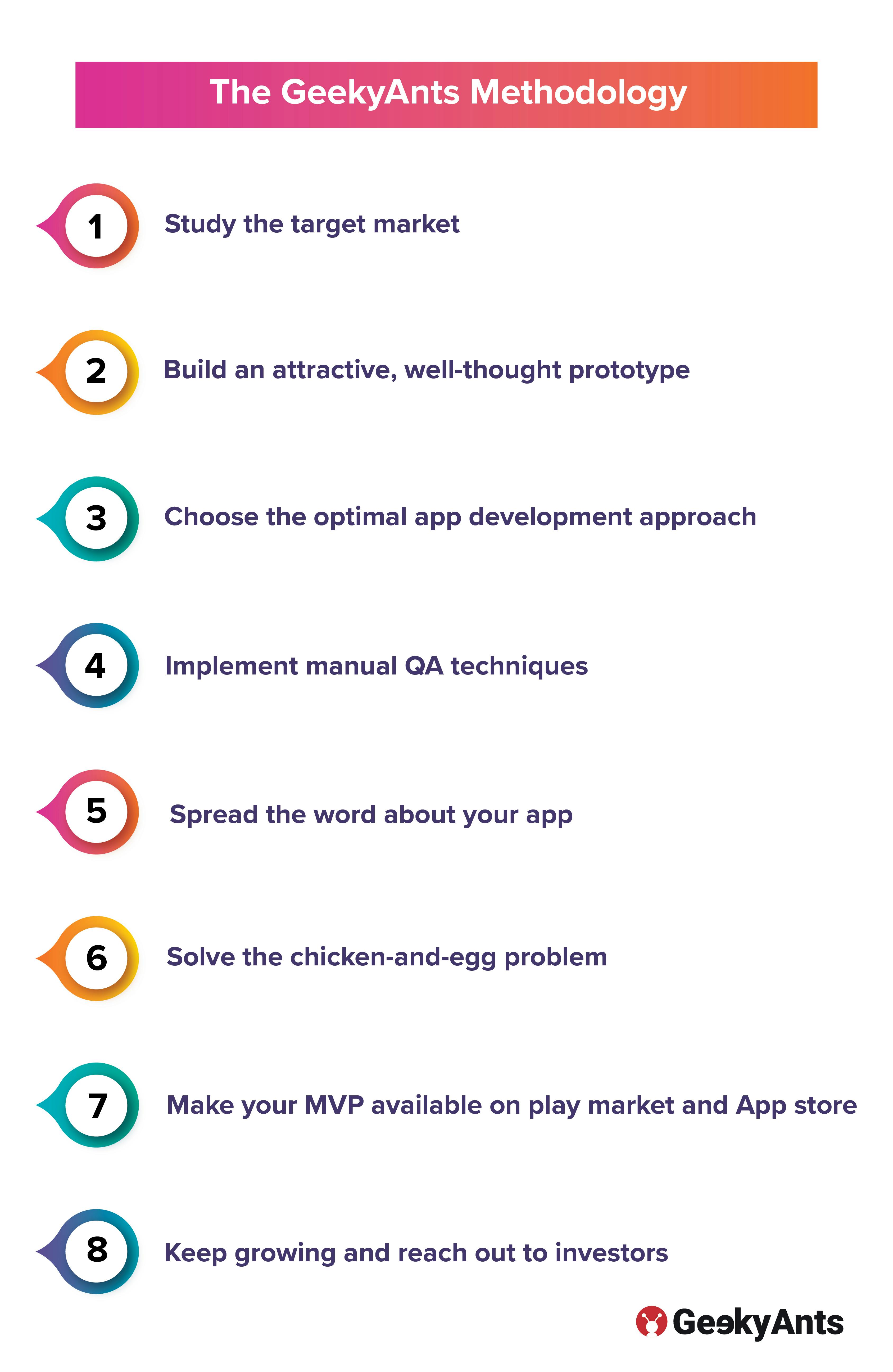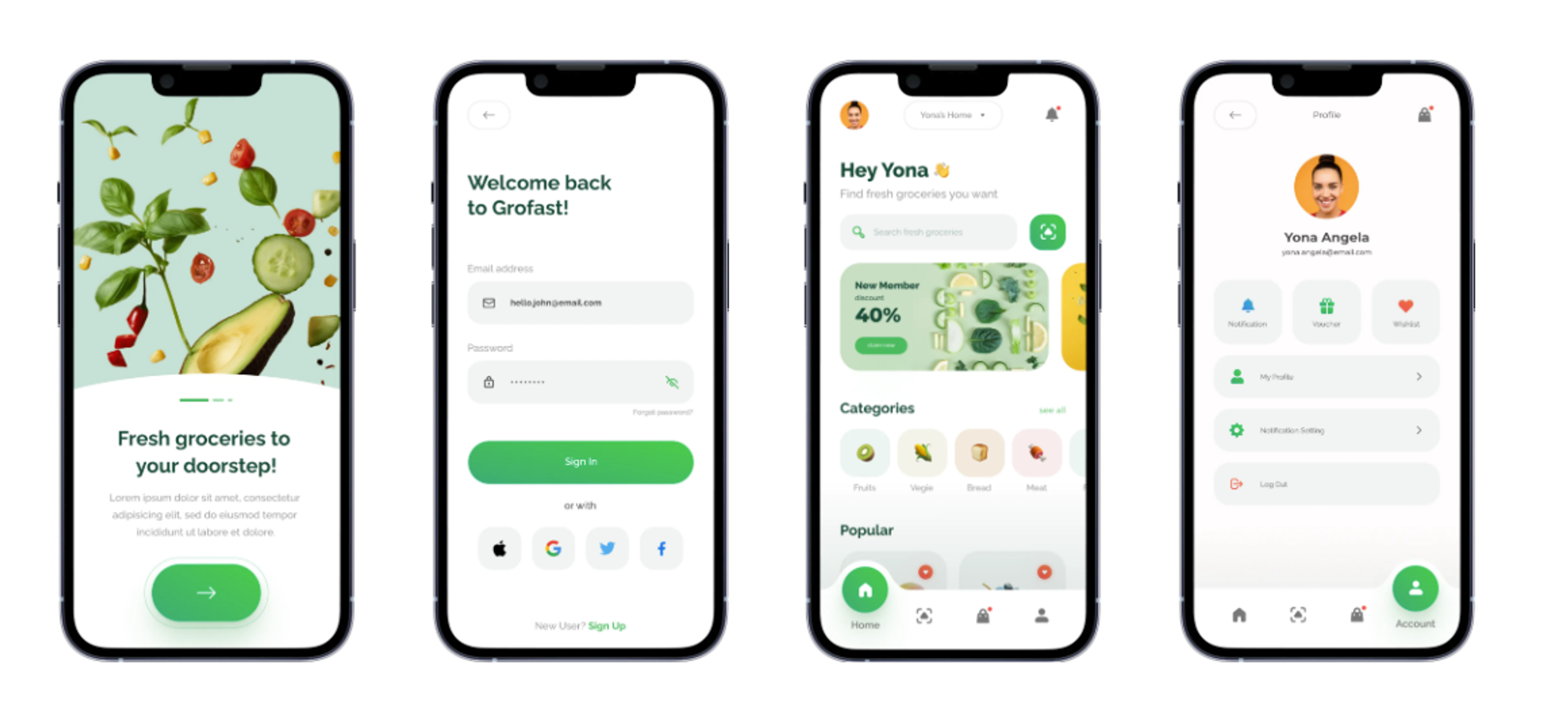Table of Contents
How to Build an Online Delivery App Like Uber Eats
Author

Subject Matter Expert

Date

Book a call
Building an online delivery app like Uber Eats can be the answer to building a profitable business. This isn't just a musing but a notion backed by significant numbers.
The food delivery app industry is booming globally, with projections indicating that it will reach a staggering market value of $62.836 billion by 2030 (source: Allied Market Research). In the United States, Uber Eats currently dominates the market, holding a substantial 24% market share among food delivery apps (source: Statista).
Interestingly, despite Uber's dominance, recent statistics show a slight decrease in the number of trips completed by Uber drivers. In 2021, they completed 6.3 billion trips, compared to 6.9 billion in 2019 (source: Business of Apps).
This suggests that there is ample room for new startups to enter the food delivery app market and carve out their own space. Let’s see how.
Exploring the Business Model of a Food Delivery App: Unveiling the Secrets of Success
Understanding the strategies and insights that drive the thriving food delivery industry is correlated with understanding what their business models look like.
Let’s take a look at what all elements make for an airtight business model.
Understanding the Business Model of a Food Delivery App

To grasp the inner workings of a food delivery app's business model, let's explore its key components:
- User-Friendly Interface: A seamless and intuitive interface simplifies the ordering process, ensuring a delightful user experience.
- Restaurant Partnerships: Collaborating with local eateries and chains expands the app's offerings, providing customers with a wide range of culinary choices.
- Efficient Delivery Logistics: Smart routing algorithms and real-time tracking optimize delivery, guaranteeing fresh and timely orders.
- Secure Payment Options: Multiple payment methods and robust security measures instill trust and accommodate customers' preferences.
- Competitive Pricing and Deals: Attractive discounts, cashback offers, and loyalty programs attract and retain customers amidst fierce competition.
- Data-Driven Personalization: Utilizing customer insights, apps offer personalized recommendations and promotions, enhancing satisfaction and loyalty.
- Revenue Generation: Apps generate revenue through commission fees, delivery charges, advertising, and subscription models.
Business Model of a Food Delivery App: How Does it Make Money?
Understanding the revenue generation strategies of successful food delivery app provides valuable insights for developing a food delivery app that can surpass the competition.

A generic food delivery app can generate revenue through various monetization methods, including:
Delivery Fees from Customers
The app charges customers a delivery fee based on factors like location and the availability of delivery partners. The specific amount may vary depending on the market in which the app operates. Additionally, a service fee of a certain percentage, typically around 15% of the order's subtotal, may be applied. For orders below a certain amount, such as $10, a small order fee of around $2 may be charged.
Optional Subscription Fees from Customers
To offer additional benefits, the app can introduce a subscription model. Customers can choose to pay a monthly subscription fee, such as $9.99, to access a premium service. The subscription, similar to an "Eats Pass," may provide advantages such as 5% off on orders over a specific amount, for example, $15, and waiving the delivery fee.
Commission Fees from Restaurants
The app earns a commission from the partner restaurants for each order they fulfill. The commission percentage varies, typically ranging from 15% to 40% of the total order value. The specific percentage depends on factors like the restaurant's market maturity and influence.
Advertising Fees from Restaurants
To enhance visibility and generate more sales, the app can offer advertising opportunities to partner restaurants. Restaurants can pay an advertising fee to the app to have their listings appear prominently in search results and gain increased traction.
Step-by-Step Guide to Building a Food Delivery App Like Uber Eats

Building a food delivery app similar to Uber Eats or other popular platforms can be a lucrative venture for business owners. To ensure success in the competitive online food industry, it is essential to follow a clear roadmap.
Here's a step-by-step guide tailored for business owners looking to develop their own food delivery app.
Step 1: Conduct Market Research
Begin by conducting thorough market research to understand the current landscape and identify opportunities. Analyze your competitors, study their services, and identify gaps that you can leverage. Determine your target audience and their preferences. Remain up-to-date with the latest industry trends and consumer demands.
Step 2: Select a Food Delivery Model
Choose a food delivery model that suits your business goals and target audience. Two common models are:
- Order-Only Model: In this model, your app accepts and manages orders while leaving the delivery logistics to the restaurants themselves.
- Order & Delivery Model: This model involves managing both orders and delivery logistics, offering a comprehensive solution to customers.
Assess the benefits and drawbacks of each model and select the one that best fits your resources and capabilities.
Step 3: Choose Prominent Features of Your App
To stand out, make sure your food delivery app has the necessary features that meet your target audience's needs. Some key features to consider are:
- User-friendly interface for seamless ordering
- Restaurant partnerships for a wide range of food options
- Efficient delivery logistics with real-time tracking
- Secure payment options to instill trust
- Competitive pricing, discounts, and loyalty programs
- Data-driven personalization for personalized recommendations
- Revenue generation through commission fees, delivery charges, and advertising.
Customize these features based on your unique value proposition and target audience preferences.
Step 4: Leverage the Right Technology Stack
Choose the right technology stack to ensure a smooth user experience and efficient app performance. Consider the following technologies:
- Web App Development: AngularJS or React for robust web applications.
- Mobile App Development: Kotlin (Android) and Swift (iOS) for reliable and user-friendly mobile apps.
- Back-End Development: PHP or other suitable backend technologies to handle app functionalities.
- Databases: MySQL or other scalable databases for efficient data management.
- Third-Party Services: Integrate necessary third-party services such as payment gateways, mapping and geolocation services, and SMS gateways to enhance app functionality.
Choose technologies that offer scalability, security, and seamless integration capabilities.
Step 5: Pick a Feasible App Development Option
Decide on the most suitable approach to develop your food delivery app based on your resources and budget:
- Hire an App Development Team: Assemble a skilled app development team consisting of designers, developers, project managers, and quality assurance specialists. This option offers full control and customization but requires significant time and investment.
- Use a Ready-Made Solution: Consider using a white label food delivery solution like Yo! Yumm, which can be customized to meet your specific requirements. This option offers faster development and lower upfront costs.
Be Smart like this Australian pet food giant
Maximized responsiveness | 2X Profits
How Much Does It Cost to Develop a Food Delivery App Like Uber Eats?
Understanding the cost involved in developing a food delivery app is crucial for business owners. Several factors influence the overall cost of development. Here are the key elements that contribute to the cost:
1. App Development Team
Hiring a skilled app development team comprising designers, developers, project managers, and quality assurance specialists is a significant expense. The cost can range between $25,000 and $150,000, depending on the complexity of the app and the team's location.
2. App Design
Creating a visually appealing and user-friendly design is essential. Design costs can range from $5,000 to $30,000 or more, depending on the complexity and customization required.
3. App Features and Functionality
The complexity and number of features in your app impact development costs. Developing the core features of a food delivery app can range from $30,000 to $100,000 on average.
4. Platform Compatibility
Developing for iOS and Android platforms separately or simultaneously affects the cost. Developing for a single platform can range from $20,000 to $40,000 while developing for both platforms can cost $40,000 to $80,000 or more.
5. Backend Development
Backend development costs, including servers, databases, APIs, and infrastructure components, can range from $15,000 to $40,000 or more, depending on complexity and scalability needs.
6. Integration with Third-Party Services
Integrating necessary third-party services, such as payment gateways and mapping services, can cost approximately $5,000 to $20,000, depending on the number and complexity of integrations.
How Can GeekyAnts Help Build a Fully Custom Food Delivery App Like Uber Eats?
In terms of developing a fully customized food delivery app like Uber Eats, GeekyAnts is the premier choice. Our reputation for excellence has been built over 17 years of delivering exceptional mobile and web applications, such as Grofast: Customizable Grocery Delivery App.
Here's why GeekyAnts is the best option for creating your online delivery app.
Our Methodology
Here’s our guide-book whilst developing customizable online applications:

Experience with Building Customizable Apps
In addition to food delivery apps, GeekyAnts specializes in building customizable grocery apps.

Grofast is a showcase app that has all the features of a modern grocery application. It is built with a robust architectural code design for the application and uses the latest technology stack, including Hasura, Dapr, and Flutter, to provide a robust and scalable solution. It can be customized for any delivery and service-based application depending on your specific requirements. Important features include Guest and User Authentication, Live Order Tracking, Vendor Authentication, and more.
Start your App Development Journey Today
Related Articles
Dive deep into our research and insights. In our articles and blogs, we explore topics on design, how it relates to development, and impact of various trends to businesses.





